Fresh available herbs are a delight for the home cook. What could be better than having the scents and flavors near to hand in your kitchen? The best way to make the most of big-flavor herbs is certainly to grow them yourself: it’s cheaper and you have them whenever you need, all year-round. Having fresh herbs growing just on your windowsill or your counter is very convenient. Plus, since herbs are easily accessible – and right next to the grill – we tend to use them a lot more. Here’s a checklist and tips for growing the top 10 kitchen herbs with success: basil, chives, cilantro, dill, marjoram, mint, oregano, parsley, rosemary, sage, tarragon and thyme.
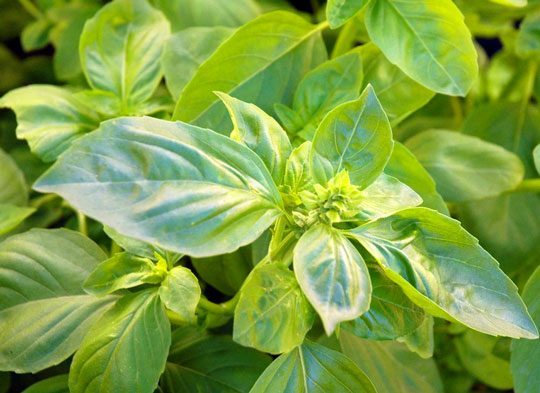
Basil
Maybe the most popular herb, basil tastes like summer with lots of licorice and peppery flavors. Use it fresh for a better flavor. Perfect for salads, carpaccio, and even desserts. Growing basil indoors is easy.
- Basil should be planted in well-drained, nutrient-rich soil. Use low release fertilizer or compost. Make sure there’s a draining hole in the bottom of you planter.
- Plant in a deep pot so that basil roots have more room to grow downwards.
- Water daily as early as possible in the morning. Don’t water at night as fungi could grow in the soil.
- Keep your plant next the window in full sun. Try to face west so that it gets full exposure to afternoon sun.
- Harvest frequently even if you don’t use your basil leaves, discard those that are too flappy or darkening. Regular harvesting encourages new and bushy growth.
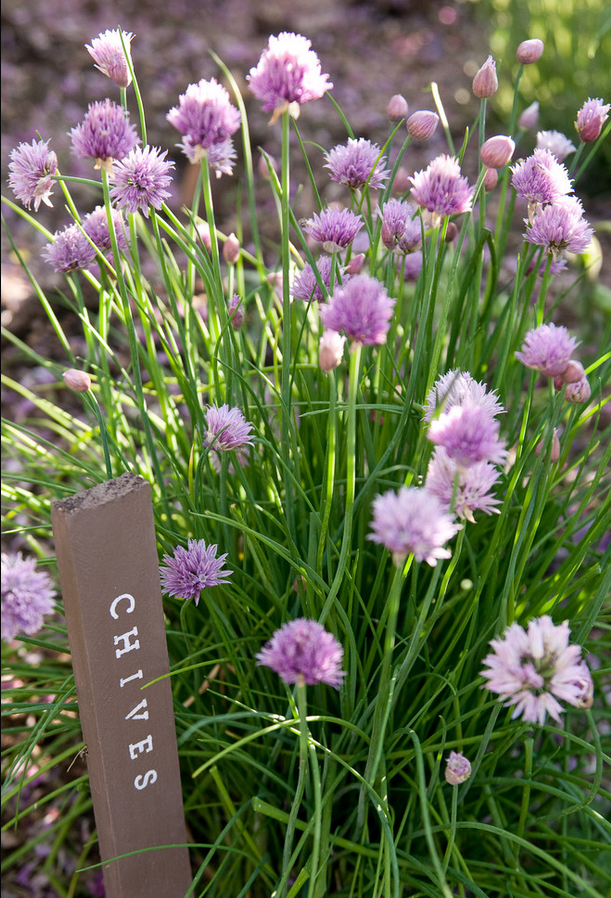
Chives
Growing chives indoors offers a handy and easy way to season your food and brighten your space with its vivid green color. Chives can be grown from seed, but it’s faster to start with plants. Chives do really great indoors on a windowsill! Chives freeze well, so you can keep them longer after harvesting.
- Keep leaves trimmed to prolong production, and divide and replant clumps.
- Chives thrive with consistently moist soil, so keep watering regularly. A dry soil will affect productivity and growth.
- Natural light exposure: Chives do best in full sun, but can handle partial shade.
- Fertilize your chives plants once per month. You can do this with homemade organic fertilizer that you sprinkle around the base.
- To not overcrowd your planters, share some with your neighbors!
- Snip the flower buds off when they appear. Letting your chives flower reduces the production and flavor of the leaves.
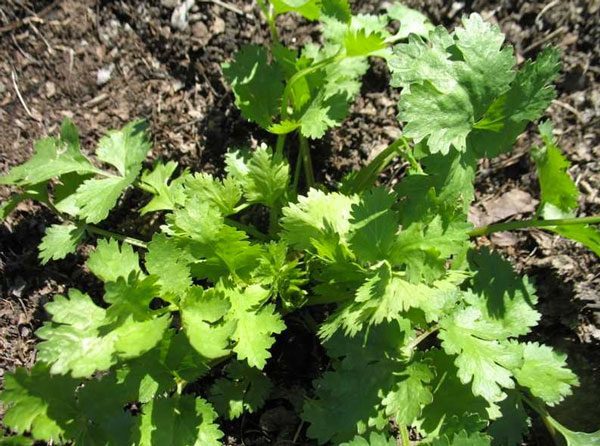
Cilantro
Growing cilantro indoors offers successful and flavorful results. Germination usually occurs in 7-10 days so you can get fast results with this fragrant herb.
- Cilantro is best planted from seed, directly into the soil. If possible, do not transplant cilantro plants, as it’s root is very fragile.
- Your pot should be at least 12 inches deep to accommodate the deep roots.
- Cover your seeds with seedling mix to 1/4 inch and water it all.
- You can create a small greenhouse by covering the planter with plastic wrap.
- Cilantro does well with full sun in the morning and shade in the afternoon.
- Harvesting: wait until the plant is 6 inches tall and collect the outside leaves. Don’t take more than half of the leaves at once. Harvest with scissors to avoid tugging on the plant and damage it.
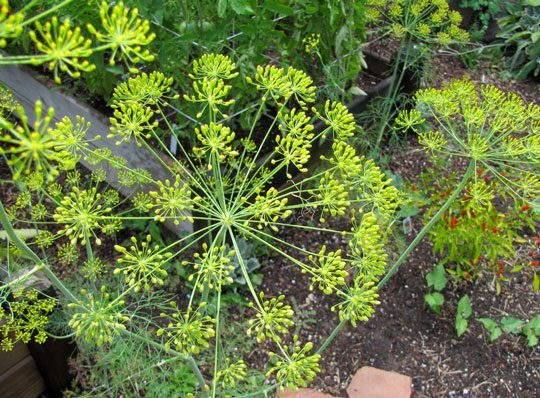
Dill
Dill is a popular herb in the kitchen, flavoring everything from pickles to fish. This herbs bears flavorful leaves when young, then quickly produces flowers and seeds. Dill leaves and seeds may be used in soups, salads, breads, party dips and fish dishes — especially with salmon. It’s flowers make dill also a very decorative plant.
- Water well and evenly.
- Dill should be best exposed at least 5-6 hours of direct sunlight for the best results.
- Pots should be fairly deep and must have holes in the bottom for a good drainage.
- If possible, don’t move your plants once they’re firmly rooted. Dill doesn’t transplant very well.
- If you don’t want your dill to self-sow and invade the neighboring planters, either don’t let it go to seed by watering it well and keeping it from getting too hot or collect seeds before they can fall.
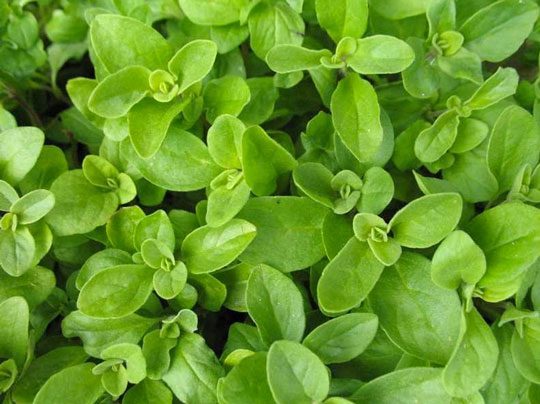
Marjoram
Marjoram enhances many different dishes. It’s a natural for meat dishes but you can use marjoram to season raw or cooked vegetables, fish and chicken. Eggs and cheese dishes dishes work well with it too. Marjoram is especially good along with other cooking herbs in beef stew. The flavor of the leaves resembles mild oregano. Marjoram leaves hold their flavor well when dried. As marjoram is a very delicate plant, unable to tolerate a hard frost, it will grow happily indoor.
- Marjoram likes partial shade on hot afternoons and bright light when grown indoors, so make sure to place it in a location where it will get good natural light. A sunny window would be perfect.
- Plants should be spaced 15 to 18 inches (35-45cm) apart. So you maybe need several planters if you plan to grow more than one plant.
- Marjoram just needs an occasional watering without liquid fertilizer, to produce a stronger flavor. Water on a regular schedule, but do not overwater.
- Harvesting: Select new growth just before buds form, and never take too much at once. If you plan to dry marjoram, harvest about a quarter of the plant per season, no more.
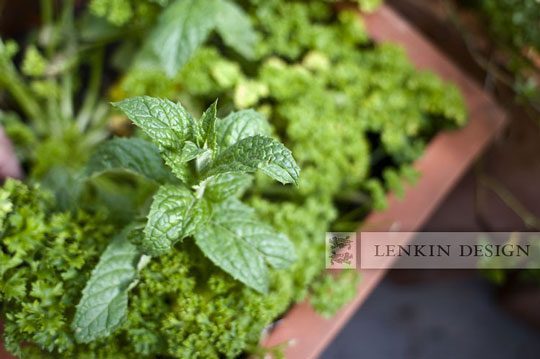
Mint
Growing mint indoors is very easy, because unlike other culinary herbs, mint practically grows itself. Mint can be started from seed, but vegetatively propagated strains often have superior flavors. Very easy to dry. Peppermints and spearmints are the best varieties for cooking. From herbal teas to lamb roast, mint has a thousands of culinary applications.
- Expose mint to daily sunlight
- You’ll need a well drained and rich fertile soil: Mix a little sand with a good food-friendly potting soil.
- Keep the soil moist constantly, but not wet.
- You can fertilize once a month with a liquid organic fertilizer.
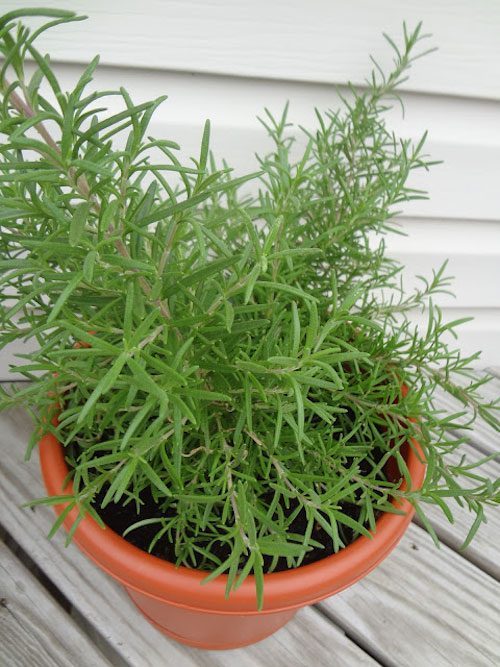
Rosemary
Fragrant and delicious rosemary is an excellent indoor herb. Superior rosemary cultivars are best purchased as plants. Varieties differ in size and flavor, though all produce pungent leaves and sturdy stems that can be used as skewers. Rosemary is very easy to dry and will flavor your grilled dishes, stew and herbal teas.
- Rosemary likes full sun. Next to a south or west facing window, with at least 5 hours of direct sunlight a day is good but, the brighter, the better
- Use terracotta pots to increase evaporation in the root zone. Let the soil dry between waterings. This helps reproducing the mediterranean climate.
- A light and fast-draining soil is preferable, for the same reasons as above.
- Water moderately on a regular schedule, do not overwater because a soggy roots will kill the plant.
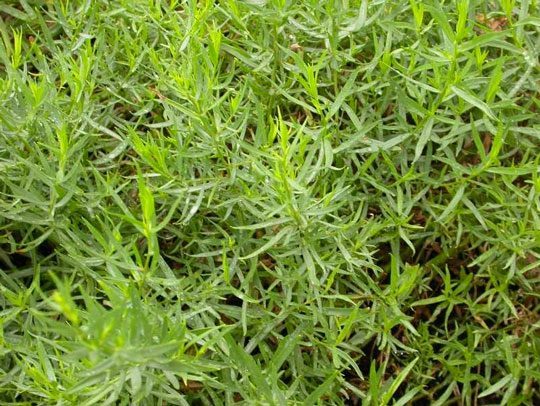
Tarragon
Tarragon is an attractive herb with slender slightly twisted leaves. It will reward you with many seasons of flavor if you care for it well. Tarragon is a fine herb for flavoring vinegars, sauce dressings and it’s easy to dry, but best used fresh.
- Tarragon performs best in a lower or diffused light situation. So try to put your planter next to a window facing anywhere but south.
- Tarragon needs good drainage so a terracotta pot will allow excess moisture to evaporate.
- Use one part of sand for 3 parts of potting soil.
- Use a pot that is at least 10-12 inches deep so that the roots have enough room to grow.
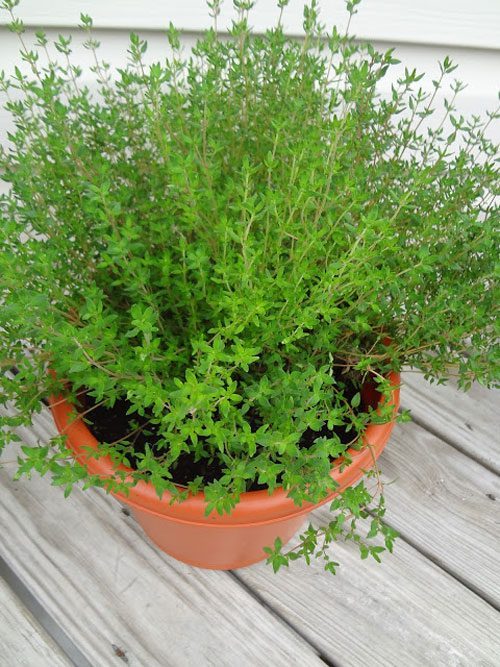
Thyme
Thyme is one of the easiest indoor herbs to cultivate. Often called English or French thyme, the best species for cooking grows to 12 inches. Thyme can be grown from seed, seedlings or rooted stem tip cuttings. Green-leafed French or English thyme provide the best flavor.
- Thyme likes sunlight, place your planter in a southern or western facing window.
- Use a mix of sand, potting soil, peat moss and perlite to provide adequate nutrients and drainage.
- Water regularly, but let the soil dry completely before watering again.
- Cut back blooming branches to increase production of leaves
- Divide plants to repot and reproduce even more plants. These will make great gifts!
(Photo credits, in order of appearance: www.azplantlady.com / www.lucycall.com / Missouri Botanical Garden Plant Finder / Sheila J. Schmitz / www.missouribotanicalgarden.org / www.lenkindesign.com / www.facebook.com/containedbeauty)

